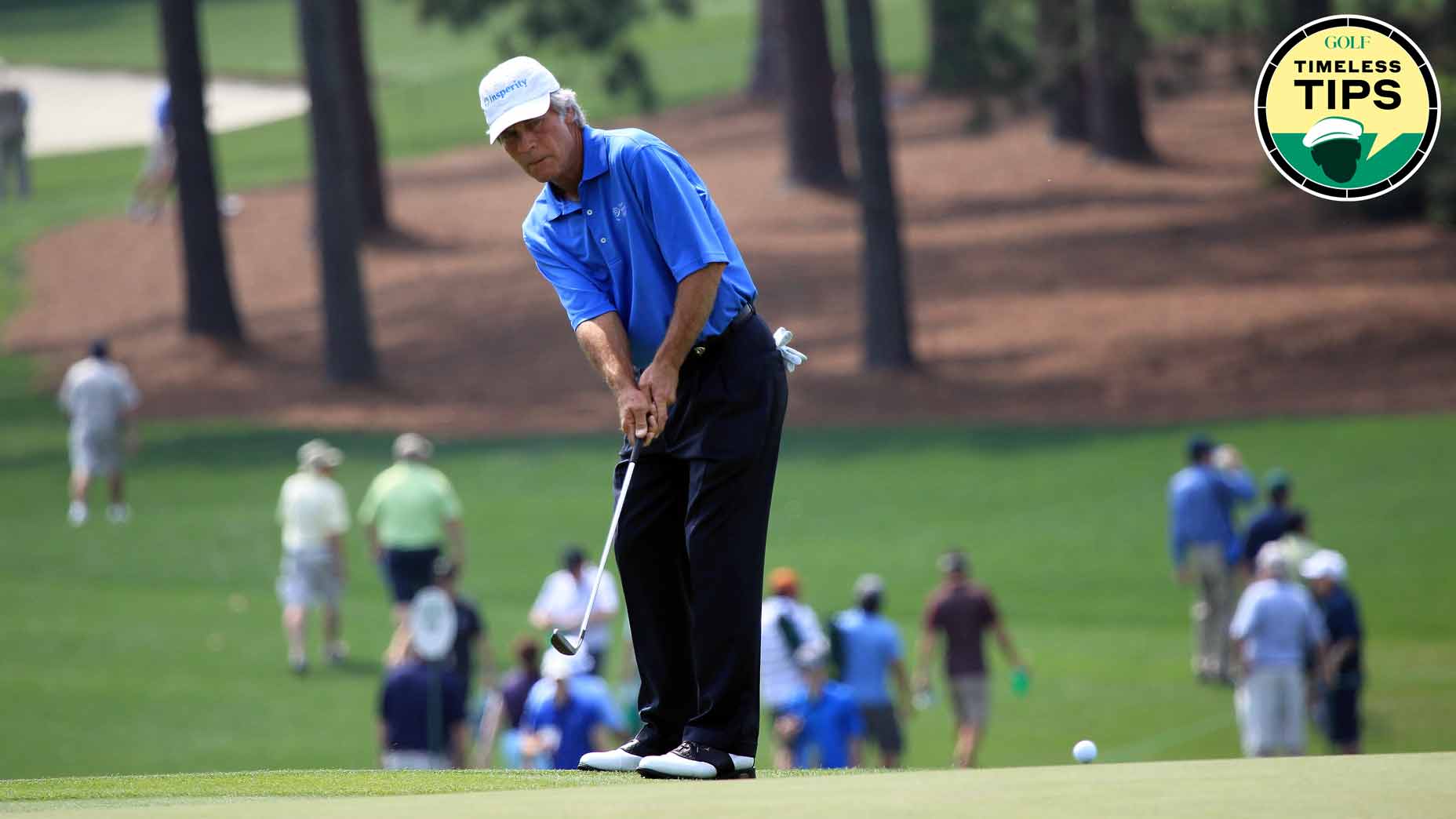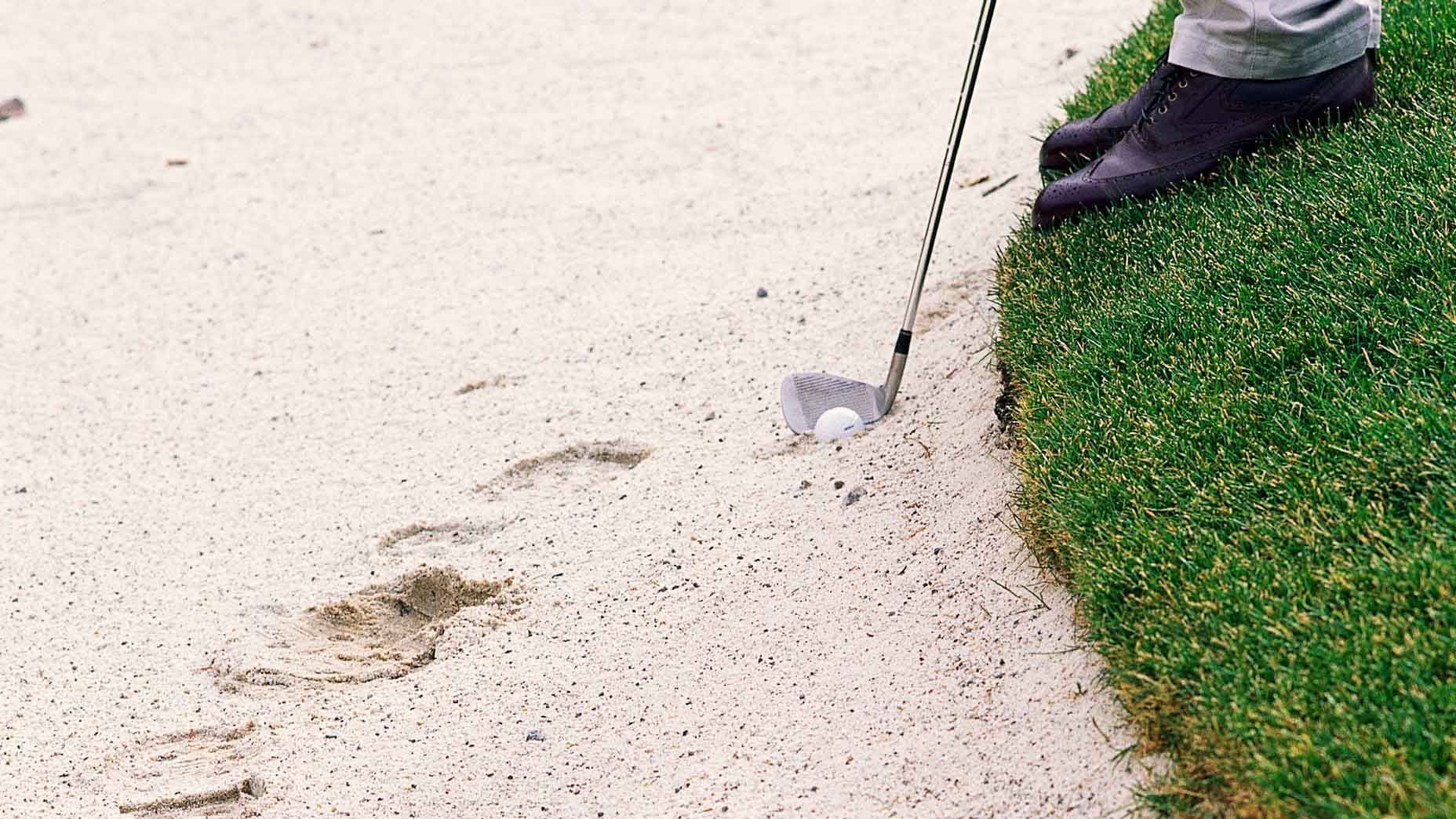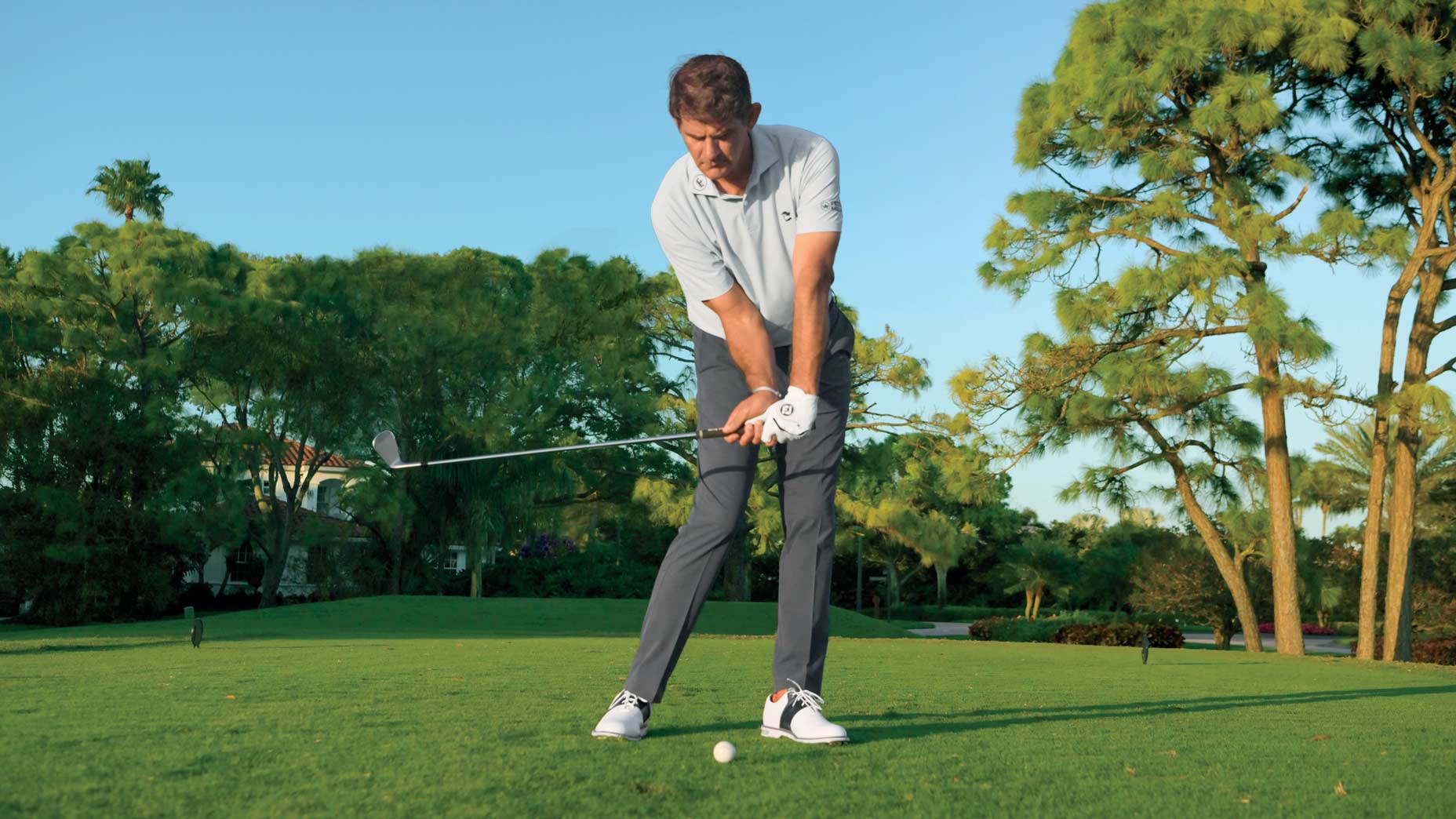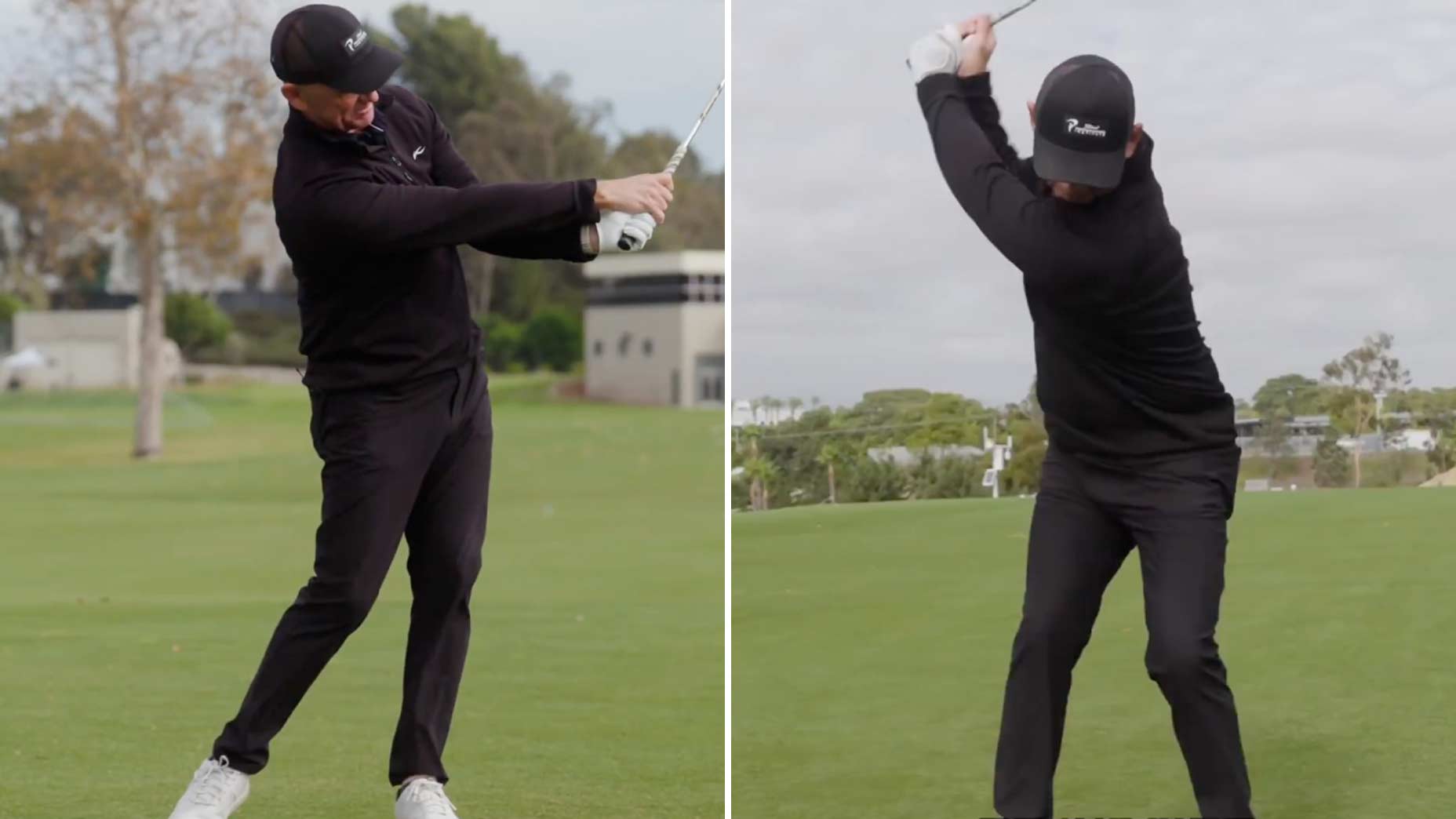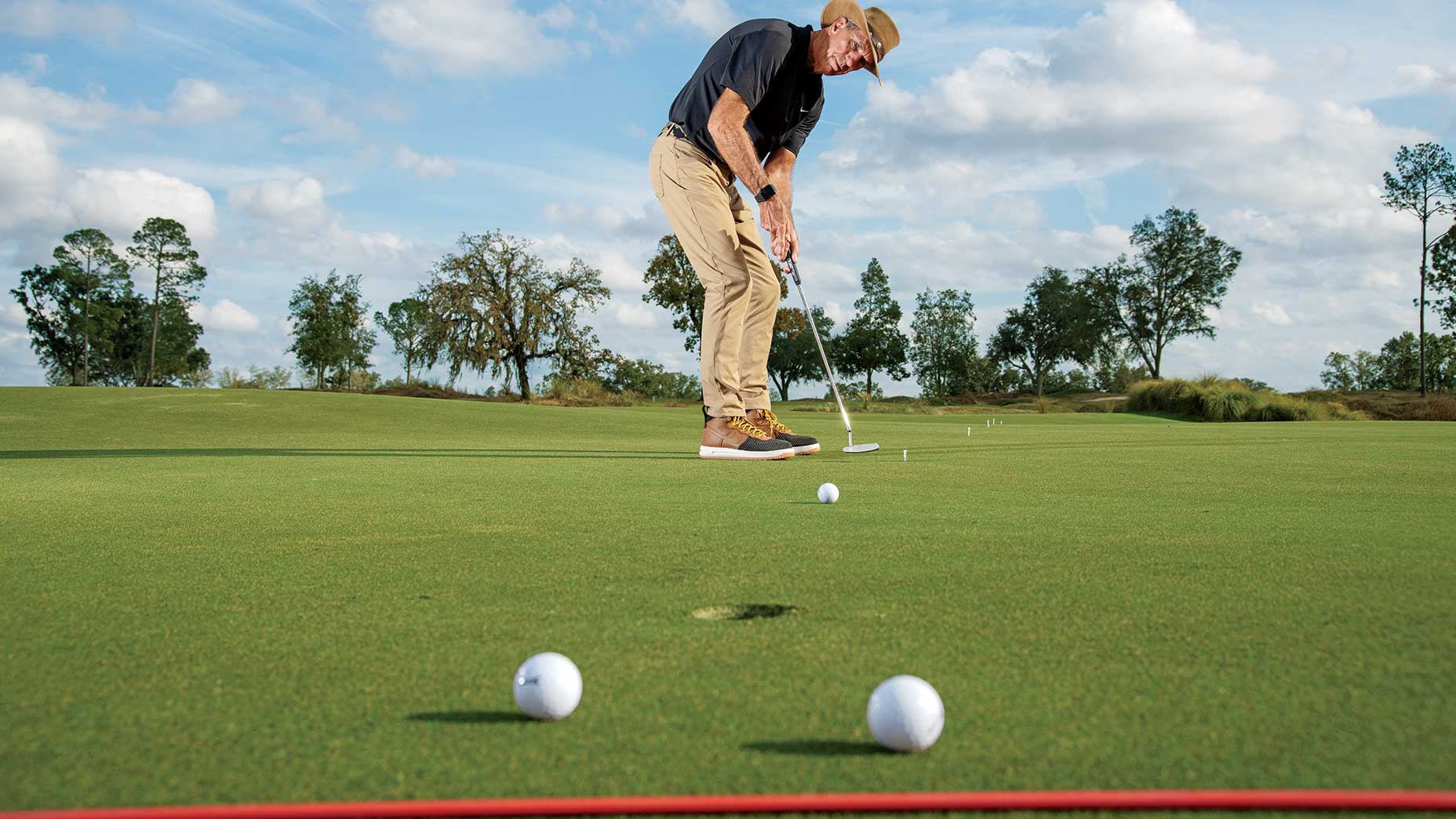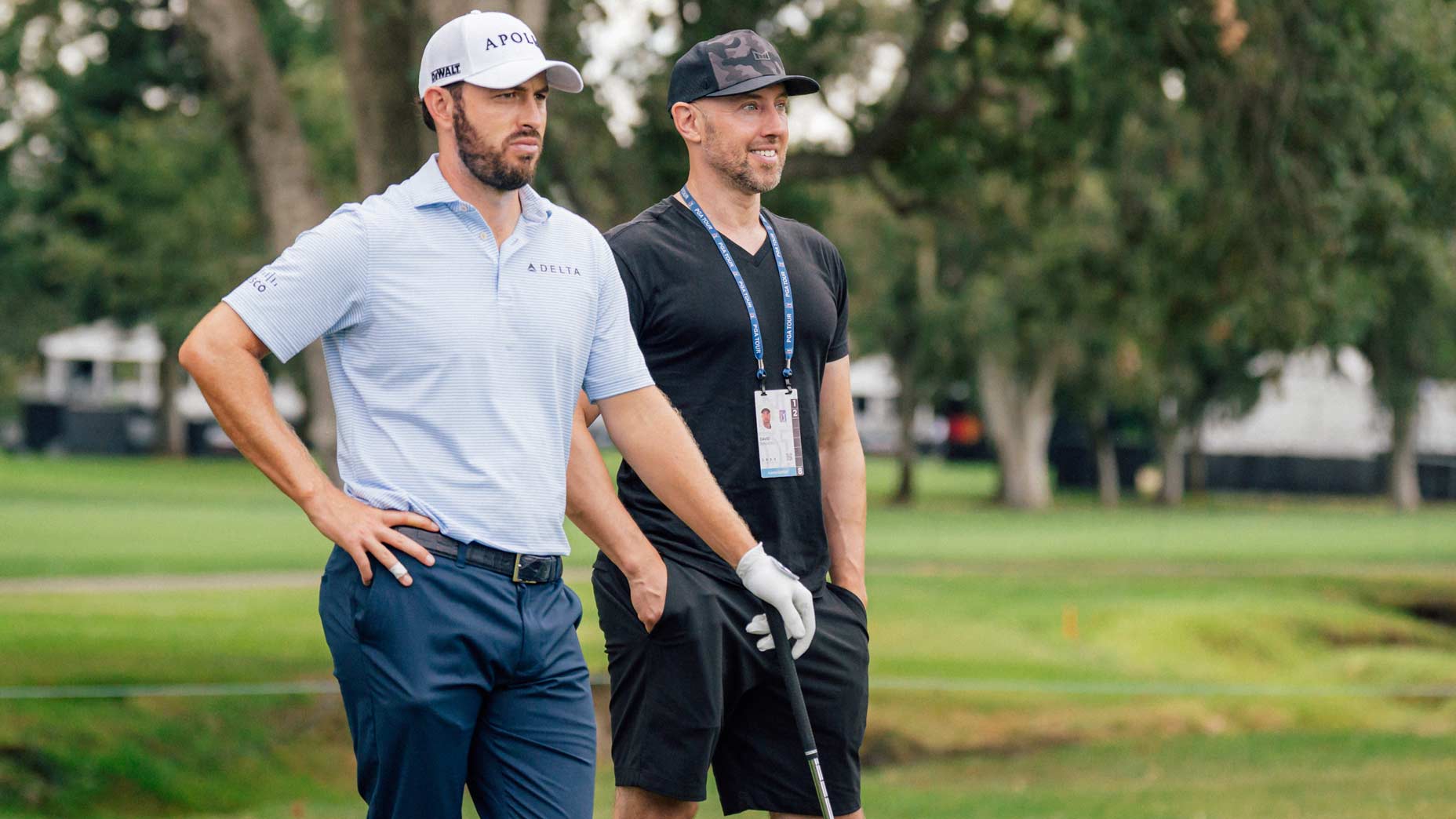Golf instruction is ever-evolving, but the best advice stands the test of time. In GOLF.com’s new series, Timeless Tips, we’re highlighting some of the greatest advice teachers and players have dispensed in the pages of GOLF Magazine. Today we look back to our April 1985 issue where Ben Crenshaw explained his secrets for lag putting. For unlimited access to the full GOLF Magazine digital archive, join InsideGOLF today; you’ll enjoy $140 of value for only $39.99/year.
Sure, we’d all love to hit it close to the pin every time we found the green, but unfortunately, that’s just not possible. That’s why it’s essential that you become a competent lag putter.
Being a great putter from distance is hugely beneficial to your scorecard. If you can eliminate three-putts, you’ll be amazed how quickly your scores plummet. Plus, without the stress of grinding over four-footers all day, it makes the game a heck of a lot more enjoyable.
When you face these lengthy putts, it’s important you make a few key adjustments in your stroke to find success. For more on that, we look back to the April 1985 issue of GOLF Magazine where two-time Masters champ Ben Crenshaw shared his secrets.
Ben Crenshaw’s lag putting keys
When you have a very long putt, stand taller to the ball. This increases the width of your swing arc so you can develop the extra force necessary to the stroke without swinging faster or using too much wrist action.
Take a wider stance, which will let you make a longer stroke without moving your head from over the ball. Also, as you’ll see later, there has to be some leg action on long putts. A wider stance allows you to move the legs properly without swaying, a fault that makes a solid hit difficult.
On an extra long putt, don’t become too line-conscious. What’s more important is the pace of the putt. The more of these putts you can lag to within a foot of the hole, the more you will hole.
To help you do this, visualize a circle with a four-foot radius around the hole. Then try to make the ball finish within the circle.
Below is a step-by-step guide for my lag-putting technique.
Backswing
Swing the putter back with the arms. Allow your shoulders to respond to the arm movement so that they turn, taking the club back to the inside. Note that the putter blade opens in relation to the target line. However, this is not something you should try to do; it results naturally from the shoulder turn.
Use just enough wrist action to keep the action fluid. You’ll also find that a little wrist action helps you make a smooth transition from backswing to downswing.

Regarding the length of the backswing, Bobby Jones made a good point when he said always take a backswing that is “long enough.” A long backswing gives you enough force in the swing without your having to change tempo. A consistent tempo on all putts is essential to good touch. A long backswing also gives you a smooth stroke.
The leg action in the backswing is similar to that of a chip shot of the same length. There’s just a little weight shift to the right foot, with the right leg staying firm.
Downswing and impact
On the downswing, key on swinging the arms and club through the ball. The shoulders respond to this action, bringing the club back from the inside to the ball, and then back to the inside in the follow through.
In the same way the turn of the shoulders opened the blade on the backswing, so the turn of the shoulders closes the blade through the ball. At impact, the blade is in the process of closing, so it’s turning very slightly over the ball. I catch the ball a little above the equator, and it starts rolling immediately. If you hit too low on the ball, it skids a long way before starting to roll.

With such a long stroke, you need a little leg action during the forward swing. If you tried to keep your legs still, you would stab at the ball rather than making a smooth stroke. By releasing the right leg to the left, there’s no chance of flipping at the ball with your wrists and pulling the ball left of target.
Follow through
If you compare the length of my follow-through on this putt to the length of the backswing, you’ll see they are mirror images. This is deliberate.
When I’m stroking a putt, I try to feel as if I’m part of a metronome: back on a count of “One,” through on a count of “Two.” This slow, even beat keeps my stroke smooth and rhythmic.

In contrast, if you try to accelerate the putter through the ball, you shorten the backswing and rush the forward swing. On short putts you can sometimes get away with this. But it is fatal on long putts. You lose your natural tempo and your touch, leaving the ball short or past the hole.
A quick summing up. On long putts, stand a little taller and wider. Aim for a four-foot circle. Swing back with the arms and shoulders. Use a “long enough” backswing with just a little wrist. Then swing the arms and shoulders through, letting the right knee release. Keep the swing as smooth as possible with the metronome beat. Then you, too, will hole your share of “monsters.”
Need help unriddling the greens at your home course? Pick up a custom Green Book from Golf Logix.
